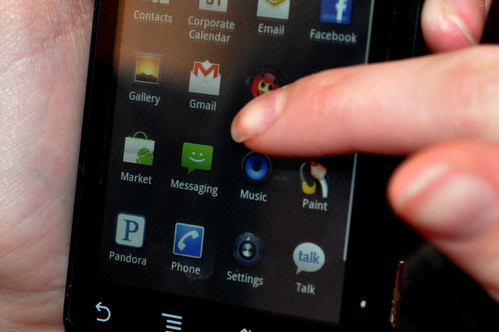
Source: CC0 Haseltine
Did you know, for example, that public toilets are probably much cleaner than your own cell phone? Studies were done calculating the amount and variety of germs found on public toilets seats: They are 10 times less than the amount and variety of bugs found on your own cell phone.
As a physician, that makes me worry about cell phones brought by surgeons in operating rooms.
Studies by Shakir, Patel, Chamberland and Kaar published in 2015 investigated cell phones as a potential source of bacterial contamination in operating rooms and showed that orthopedic surgeons’ cell phones were covered with germs. The germs cleared up after wiping the cell phones with a cleaning solution but after one week, the germs were back. That means that ideally cell phones need to be wiped with a cleaning solution more often than once a week. But who does that?
The problem is that after touching their cell phone, people often touch their nose or mouth. Dr. Charles Gerba, microbiologist, says in his TEDx speech in Phoenix that adults put their fingers in their nose, mouth or eyes an average of 16 times an hour (for kids, it could be as much as 80 times an hour). This guarantees an easy transmission of viruses like influenza viruses (responsible for the flu), rhinoviruses (responsible for colds), noroviruses (responsible for diarrhea and vomiting), enterotoxigenic E. Coli (also responsible for diarrhea and vomiting) and many other viruses and bacteria.
People tend to think that what is familiar to them and what they use every day is safe. Paul Slovic, a psychology professor at the University of Oregon, evaluates people’s perceived risk and describes 9 factors that help people determine whether what they are using is safe or not.
Those 9 criteria are:
- Is the item known to science?
- Is it known to you?
- Is it controllable or uncontrollable?
- Is it old or new?
- Is it voluntary or involuntary?
- Is it common or not?
- Is it chronic or not?
- Are the consequences immediate or delayed?
- Is it certainly fatal or certainly not fatal?
Slovic gives an example and compares perceived risk of X-Rays with nuclear power:
X-Rays are being perceived less scary than nuclear power which is not known to people, uncontrollable, not common, with delayed consequences and certainly fatal.
Now let’s apply this to cell phones: They are known to science, they are known to people, controllable, voluntary, common and certainly not fatal…So people don’t worry about them.
But people are paranoid about toilets and so they clean them thoroughly. Dr. Charles Gerba says in his TEDx talk that “If there is ever and epidemic of anything, sit on the toilet which will be the safest place of all”.
Adults’ cell phones carry some germs on their surface but when their small kids use the phones, those become covered with many more germs.
This could be life or death.
In 2012, a thief who stole a cell phone from an Ebola isolation ward in Uganda soon contracted the disease through contact with the phone, according to medicaldaily.com.
In case of another Ebola outbreak or other epidemic, it will be critical to clean cell phone surfaces. So you might as well start now and while you are at it, also clean your computer keyboard, your iPad and your remote controls.
Better safe than sorry.
References
https://www.ncbi.nlm.nih.gov/pubmed/22793671
Ustun C1, Cihangiroglu M. Health care workers’ mobile phones: a potential cause of microbial cross-contamination between hospitals and community J Occup Environ Hyg. 2012;9(9):538-42. doi: 10.1080/15459624.2012.697419.
http://www.medicaldaily.com/man-gets-ebola-cell-phone-he-stole-ebola-patient-242189
https://www.ncbi.nlm.nih.gov/pubmed/25653323
https://www.cancer.gov/about-cancer/causes-prevention/risk/radiation/cell-phones-fact-sheet
http://www.huffingtonpost.com/2012/08/27/ebola-phone-theft-steals-infected-patient_n_1832927.html
Ulger F, Esen S, Leblebicioglu H. Are we aware how contaminated our mobile phones with nosocomial pathogens Ann Clin Microbiol Antimicrob. 2009;8:7.
Brady R, Wasson A, Stirling I, McAllister C, Damani N. Is your phone bugged? The incidence of bacteria known to cause nosocomial infection on healthcare workers’ mobile phones. J Hosp Infect. 2006;62(1):123–5.
http://www.scielo.br/scielo.php?script=sci_arttext&pid=S0104-12902010000400002https://www.amazon.com/Risk-Practical-Deciding-Really-Dangerous/dp/0618143726#reader_0618143726
Kelly A Reynolds, et al The healthy workplace project: Reduced viral exposure in an office setting.Arch Environ Occup Health 2016 May 11;71(3):157-62. Epub 2015 Jun 11.
Charles P Gerba, et al Bacterial contamination of computer touch screens. Am J Infect Control 2016 Mar;44(3):358-60
TEDxPhoenix – Dr. Charles P Gerba – Hygiene in the 21st Century

